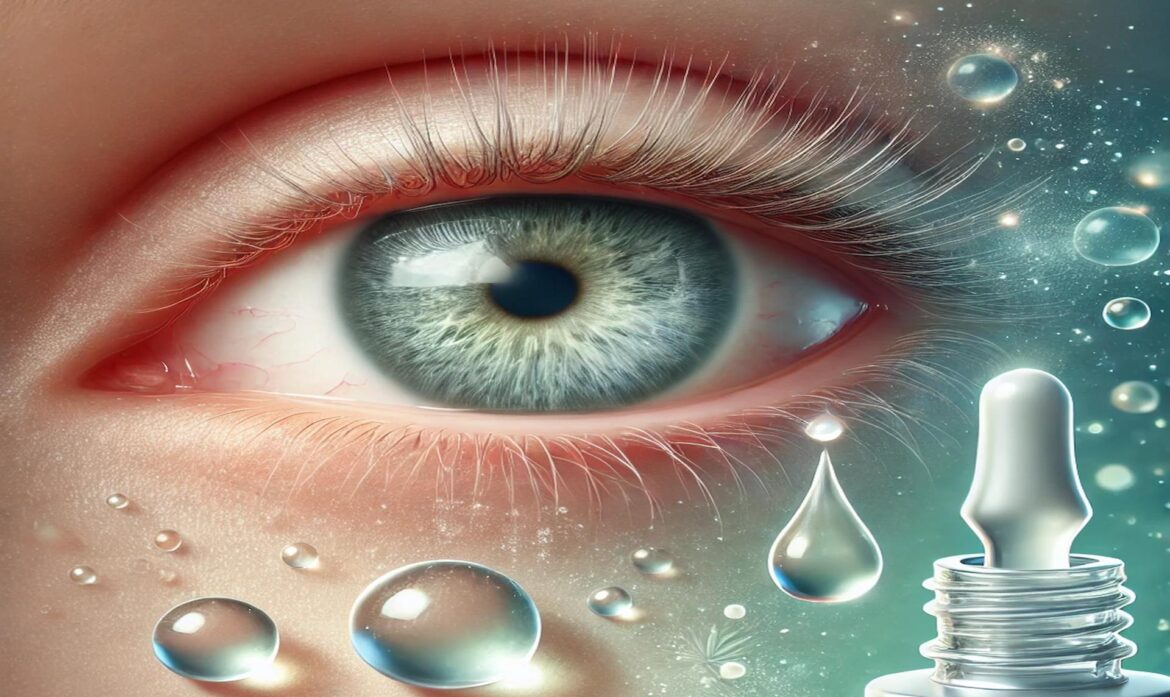Dry eyes can be more than just a mild annoyance; for many, it’s a persistent issue that impacts daily life. Whether you’re spending hours in front of a computer or braving harsh weather conditions, understanding and managing dry eye syndrome is crucial. This blog post aims to provide you with effective solutions to help relieve dry eyes and improve your quality of life.
Understanding Dry Eye Syndrome
Dry eye syndrome occurs when your eyes don’t produce enough tears or when the tears evaporate too quickly. This can lead to discomfort, redness, and even blurred vision. Understanding the causes of dry eyes is the first step in managing the condition. Factors such as age, environment, and lifestyle play significant roles in the development of dry eye symptoms.
Symptoms to Look Out For
When dealing with dry eye syndrome, recognizing symptoms early can make a world of difference. Common symptoms include a gritty or burning sensation in your eyes, light sensitivity, and nighttime driving difficulty. If you notice these symptoms persistently, it’s time to consider seeking professional help or trying home remedies to alleviate the discomfort.
The Role of Tears
Tears are not just for crying. They play a vital role in keeping your eyes lubricated and free of dust and other irritants. A balanced tear film consists of three layers—oil, water, and mucus—that work together to maintain eye health. Disruption in any of these layers can lead to dry eye syndrome, highlighting the importance of a well-functioning tear system.
Environmental Factors
Sometimes, your surroundings can exacerbate dry eye symptoms. Exposure to air conditioning, heating, or excessive screen time can contribute to dryness. Being aware of these environmental triggers allows you to take preventative steps such as using a humidifier or taking regular breaks from digital screens.
Lifestyle Modifications
Making small changes in your daily routine can significantly impact managing dry eyes. Simple modifications like increasing your water intake, incorporating omega-3 fatty acids into your diet, or wearing sunglasses to protect against wind and sun can help alleviate symptoms. These lifestyle changes are easy to implement and can offer noticeable relief.
Over-the-Counter Remedies
For those seeking immediate relief, over-the-counter eye drops can be a lifesaver. These artificial tears are designed to supplement the natural moisture in your eyes. However, not all eye drops are created equal. It’s essential to choose preservative-free options if you plan on using them frequently to avoid further irritation.
Prescription Treatments
If over-the-counter remedies aren’t effective, it may be time to seek advice from a healthcare professional. Prescription treatments such as cyclosporine or lifitegrast can enhance tear production and alleviate inflammation. Your St. George optometrist can assist you in selecting the most suitable treatment plan tailored to your specific condition.
The Importance of Regular Check-Ups
Regular eye check-ups are crucial in maintaining eye health, especially for those prone to dry eyes. An optometrist can offer personalized recommendations and monitor any changes in your condition. Identifying and addressing issues early can prevent complications and ensure your eyes remain healthy.
Home Remedies to Try
Before reaching for medication, consider trying some home remedies to manage dry eyes. Warm compresses and eyelid massages can help unclog oil glands, improving tear quality. Additionally, practicing the 20-20-20 rule—looking 20 feet away for 20 seconds every 20 minutes—can reduce eye strain and dryness.
Understanding Your Diet
What you eat can have a significant impact on your eye health. Incorporating foods rich in omega-3 fatty acids, such as fish and flaxseeds, can support tear production. Additionally, staying hydrated by drinking plenty of water ensures your body, including your eyes, stays adequately lubricated.
The Power of Technology
In our digital age, technology can both cause and help manage dry eye syndrome. Tools like blue light filters and screen break reminders can reduce strain on your eyes. Utilizing these technological solutions can help mitigate the negative effects of prolonged screen time.
Building a Supportive Community
Managing dry eye syndrome can feel overwhelming, but you’re not alone. Joining support groups or online forums can provide a sense of community and offer valuable tips from those experiencing similar challenges. Sharing experiences and solutions can be empowering and reassuring.
Conclusion
Dry eye syndrome doesn’t have to be an inevitable part of life. By understanding its causes and implementing effective solutions, you can manage your symptoms and improve your quality of life. Whether through lifestyle changes, over-the-counter remedies, or professional treatments, relief is within reach. For personalized advice and treatment options, consider booking an appointment with your local optometrist.

